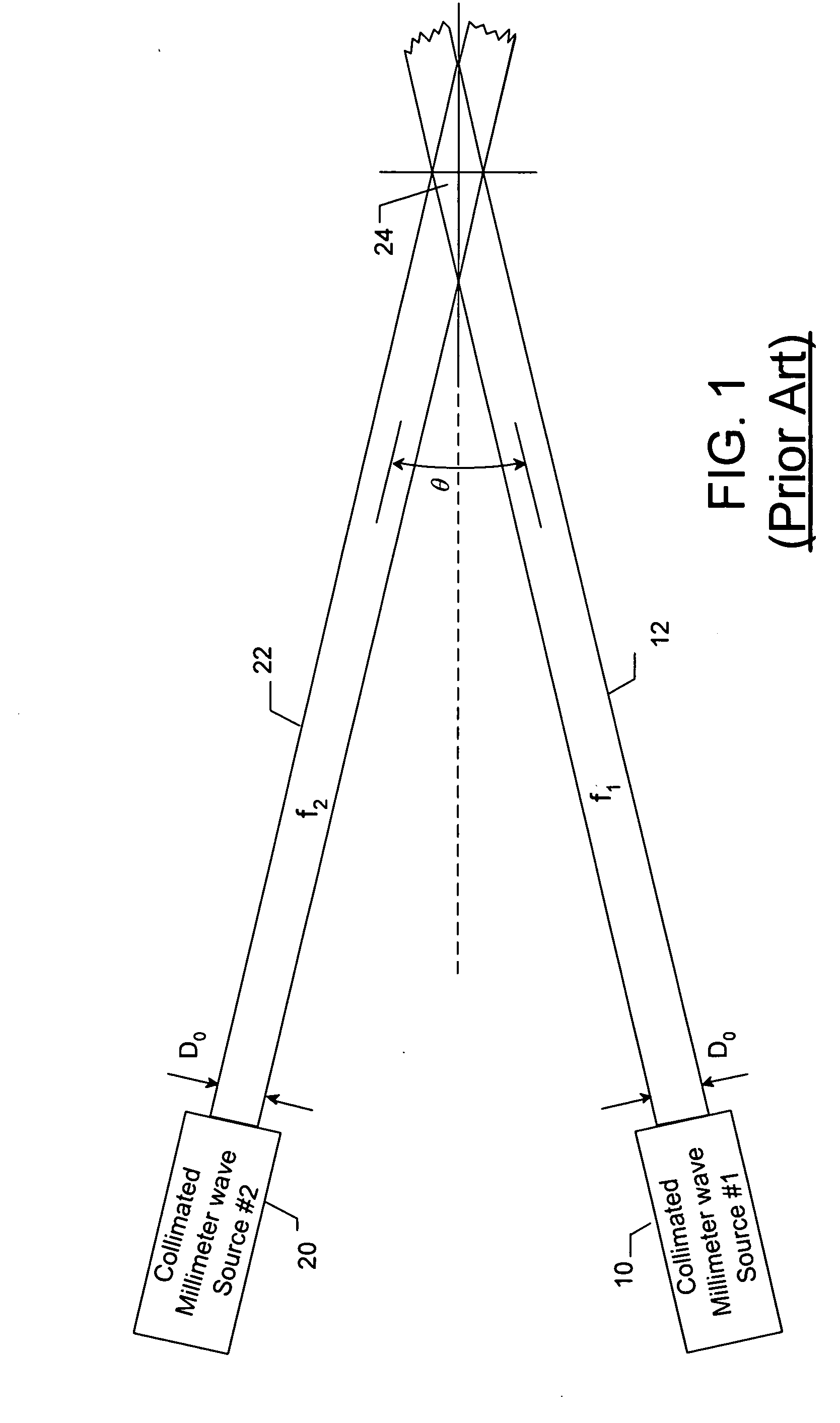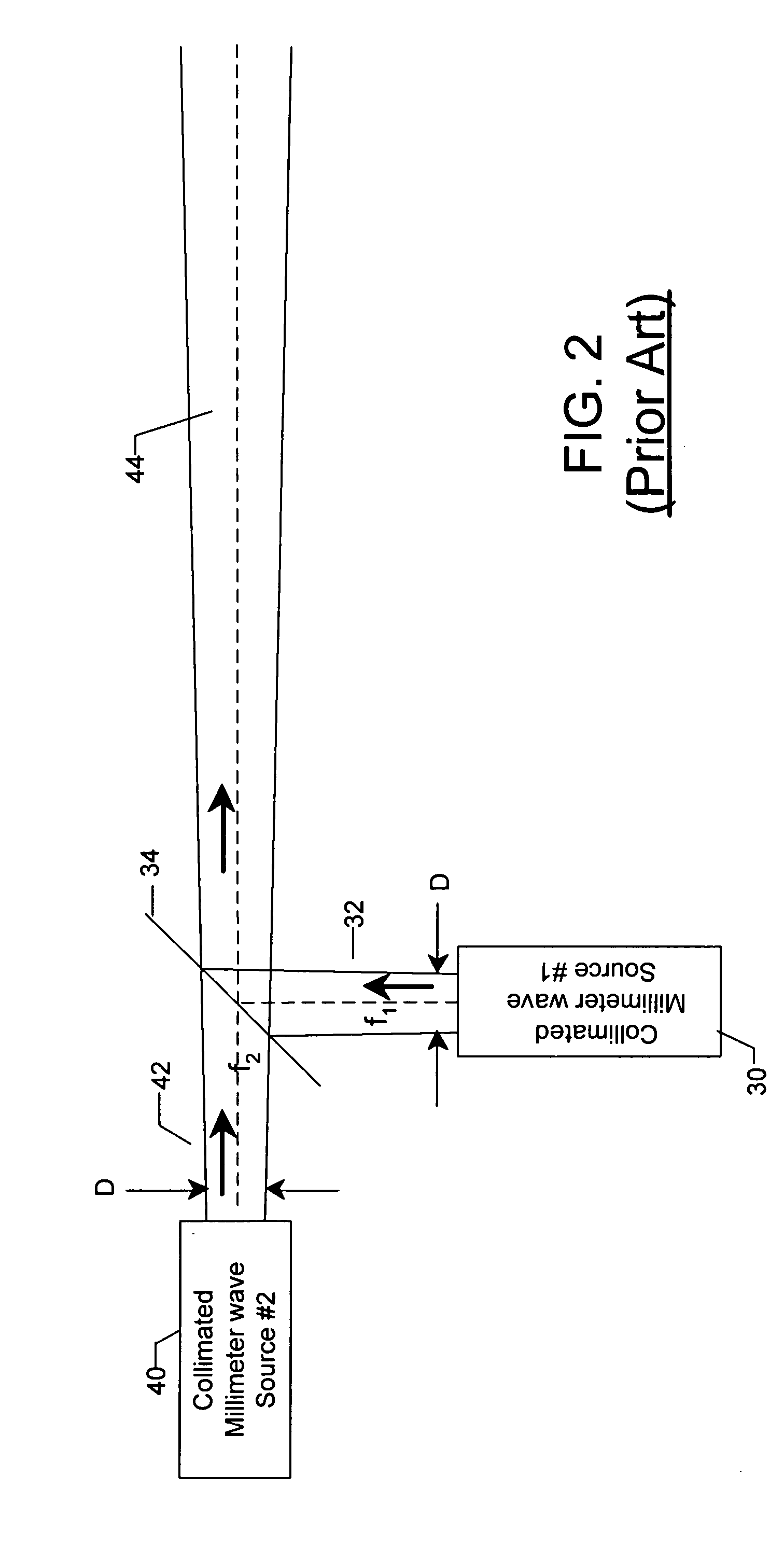Dual frequency antennas and associated down-conversion method
a technology of antennas and down conversion methods, applied in the direction of antennas, simultaneous aerial operations, antenna feed intermediates, etc., can solve problems such as interference with electronics operation
- Summary
- Abstract
- Description
- Claims
- Application Information
AI Technical Summary
Benefits of technology
Problems solved by technology
Method used
Image
Examples
Embodiment Construction
[0018] The present inventions now will be described more fully hereinafter with reference to the accompanying drawings, in which some, but not all embodiments of the inventions are shown. Indeed, these inventions may be embodied in many different forms and should not be construed as limited to the embodiments set forth herein; rather, these embodiments are provided so that this disclosure will satisfy applicable legal requirements. Like numbers refer to like elements throughout.
[0019] Electromagnetic radiation in the RF (radio frequency), microwave, millimeter and optical wave ranges interacts with thin conducting bodies, such as wires when the conductor is aligned with the electric field of radiation. The interaction is dependent upon conductor length, l, in relation to the radiation wavelength, λ. A half wavelength dipole antenna, for example, will resonate and reradiate for a conductor length that is one half the radiation wavelength. For any such antenna, the antenna converts t...
PUM
 Login to View More
Login to View More Abstract
Description
Claims
Application Information
 Login to View More
Login to View More - R&D
- Intellectual Property
- Life Sciences
- Materials
- Tech Scout
- Unparalleled Data Quality
- Higher Quality Content
- 60% Fewer Hallucinations
Browse by: Latest US Patents, China's latest patents, Technical Efficacy Thesaurus, Application Domain, Technology Topic, Popular Technical Reports.
© 2025 PatSnap. All rights reserved.Legal|Privacy policy|Modern Slavery Act Transparency Statement|Sitemap|About US| Contact US: help@patsnap.com



